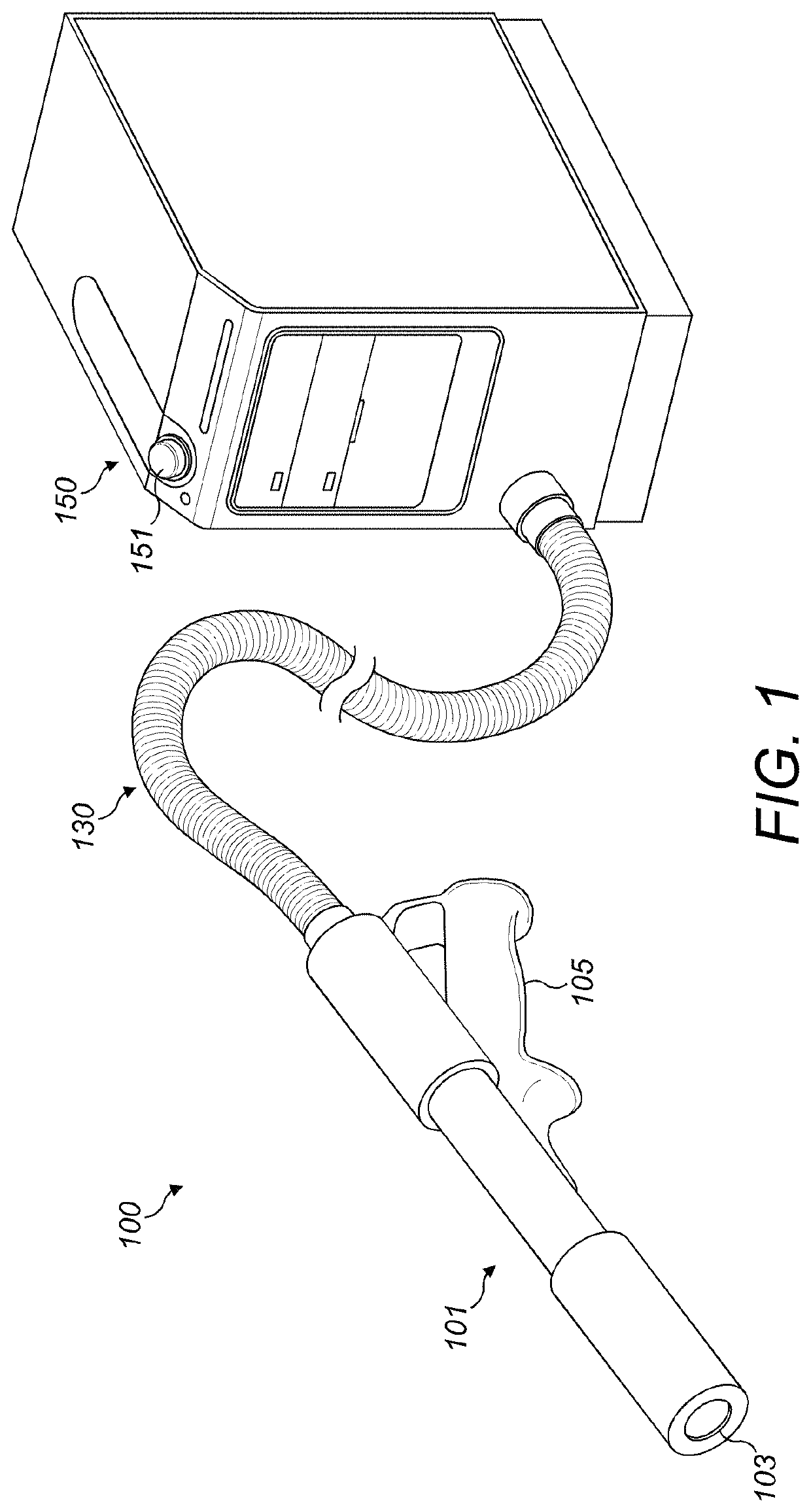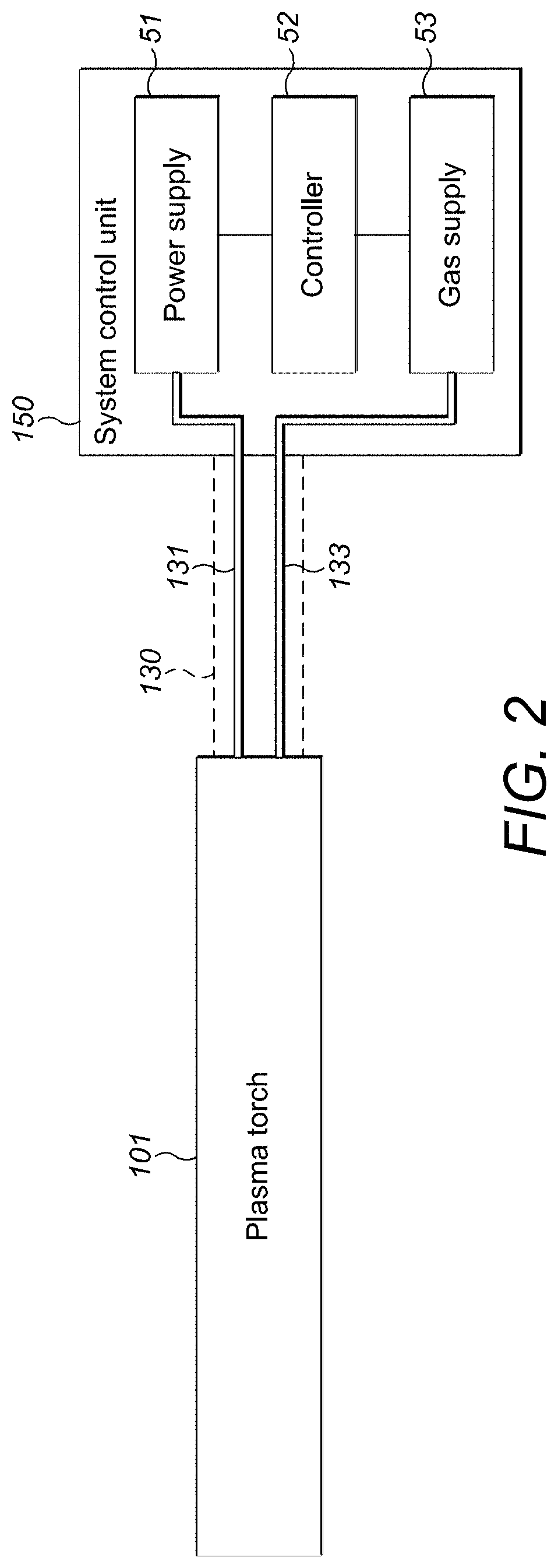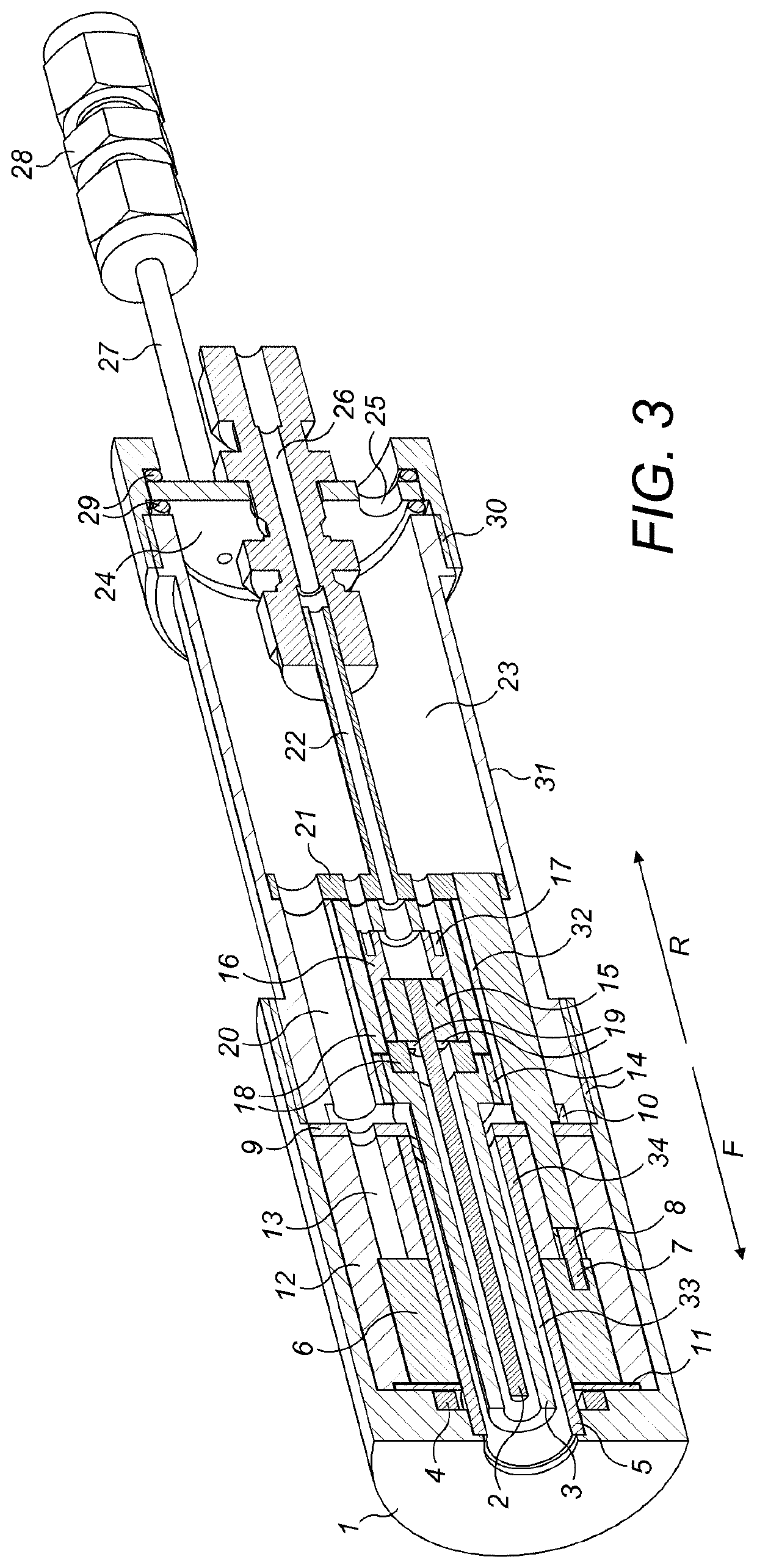Plasma generation
a technology of plasma and plasma, applied in the field of plasma generation, can solve the problems of not being able to improve the appearance of the skin, preventing effective treatment of localized irregularities, and changing the skin composition, and achieves a high degree of flexibility and control over the operation, and the effect of fluence in the plasma plum
- Summary
- Abstract
- Description
- Claims
- Application Information
AI Technical Summary
Benefits of technology
Problems solved by technology
Method used
Image
Examples
Embodiment Construction
[0065]The detailed description set forth below in connection with the appended drawings is intended as a description of presently preferred embodiments of the invention, and is not intended to represent the only forms in which the present invention may be practised. It is to be understood that the same or equivalent functions may be accomplished by different embodiments that are intended to be encompassed within the spirit and scope of the invention. Furthermore, terms “comprises,”“comprising,” or any other variation thereof, are intended to cover a non-exclusive inclusion, such that apparatuses and method steps that comprises a list of elements or steps does not include only those elements but may include other elements or steps not expressly listed or inherent. An element or step proceeded by “comprises . . . a” does not, without more constraints, preclude the existence of additional identical elements or steps that comprises the element or step.
[0066]Referring now to FIGS. 1 and ...
PUM
| Property | Measurement | Unit |
|---|---|---|
| energy levels | aaaaa | aaaaa |
| penetration depth | aaaaa | aaaaa |
| dielectric constant | aaaaa | aaaaa |
Abstract
Description
Claims
Application Information
 Login to View More
Login to View More - R&D
- Intellectual Property
- Life Sciences
- Materials
- Tech Scout
- Unparalleled Data Quality
- Higher Quality Content
- 60% Fewer Hallucinations
Browse by: Latest US Patents, China's latest patents, Technical Efficacy Thesaurus, Application Domain, Technology Topic, Popular Technical Reports.
© 2025 PatSnap. All rights reserved.Legal|Privacy policy|Modern Slavery Act Transparency Statement|Sitemap|About US| Contact US: help@patsnap.com



